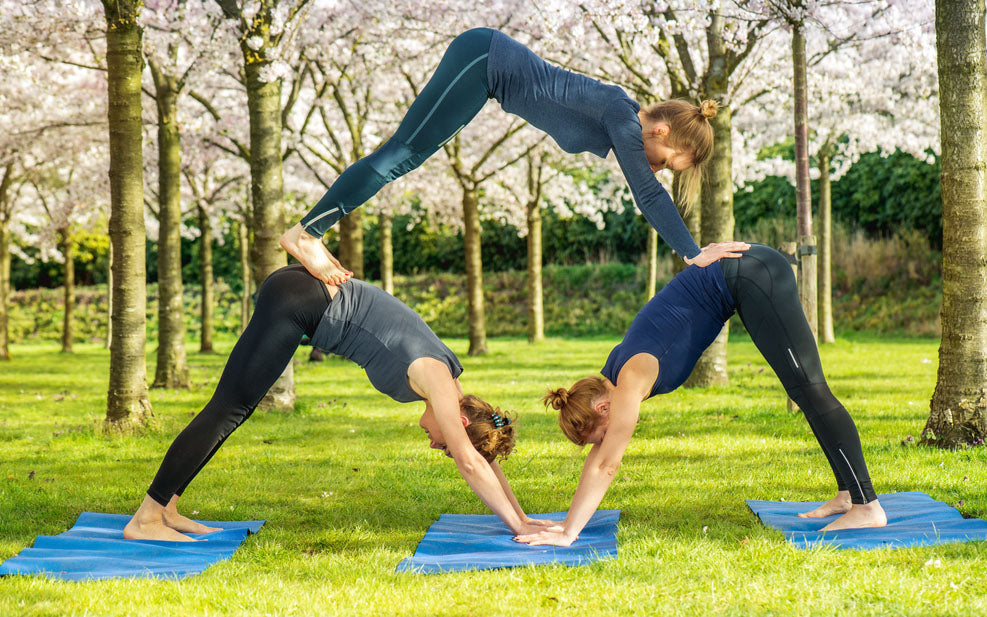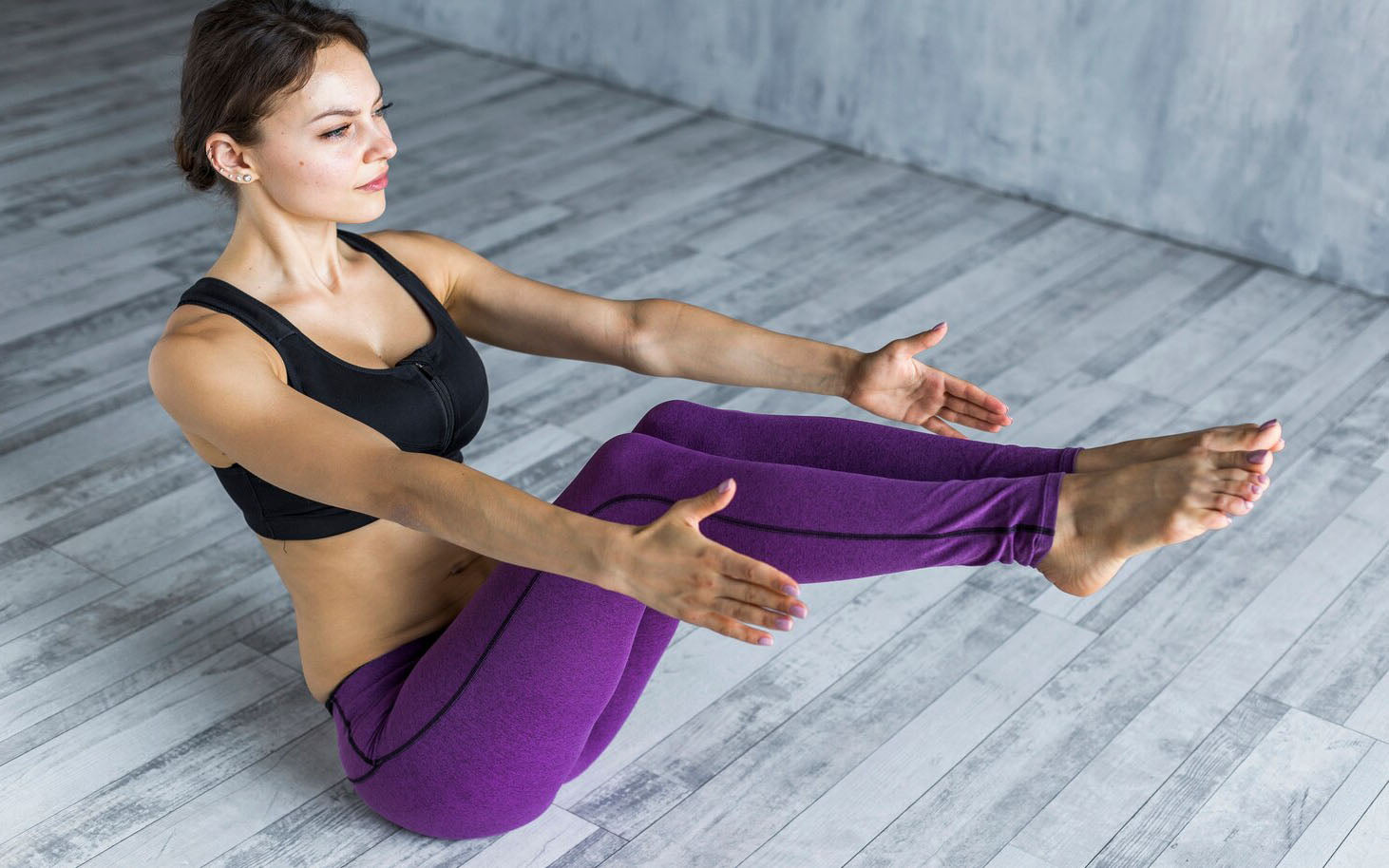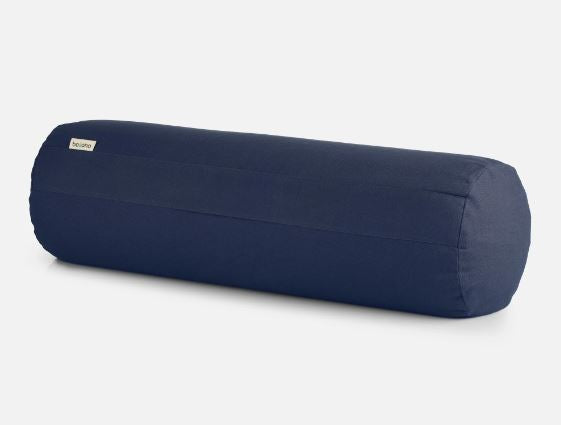
Yoga, an ancient practice known for its ability to unite mind, body, and spirit, typically conjures images of solitary meditation or duos moving through flows in synchrony. However, the world of yoga offers a unique and playful expansion into group formations, with 3-person yoga poses (or "triads") standing out as a captivating exploration of balance, strength, and connection. In this guide, I'll delve into the world of 3-person yoga poses, offering a detailed look at how to safely and effectively create these living sculptures of trust and mutual support.
The Foundation Of 3-Person Yoga
It's crucial to understand the foundation upon which successful 3-person yoga builds. This foundation includes communication, trust, and physical and mental flexibility. Each participant must be willing to listen to their partners, trust in their support, and adapt to the moment's needs. Safety is paramount, so always begin with a warm-up to prepare the body for practice.
Yoga Accessories Needed In Three-Person Yoga Poses
When practicing 3-person yoga poses, having the right accessories can significantly enhance the experience, making it safer, more comfortable, and more enjoyable for all participants. Here's a list of recommended accessories for trio yoga:
Yoga Mats: Each person should have their mat for individual poses or align mats together for group poses to define personal space and ensure comfort.
Yoga Blocks: These can support hands, feet, or other body parts during poses that require extra balance or reach.
Yoga Belt: Useful for participants who need help reaching their feet or maintaining alignment in poses like the seated forward fold train.
Yoga Bolsters: Can be placed under torsos, knees, or backs during the three-person Sphinx pose to provide extra support and deepen relaxation.
Getting Started: Preparatory Steps
- Warm-Up: Begin with individual stretches and basic yoga poses to prepare your body. Focus on the spine, shoulders, and hips, crucial in maintaining balance and flexibility in group poses.
- Communication: Establish clear signals or words to indicate readiness, discomfort, or the need to exit a pose. This ensures everyone feels safe and heard throughout the practice.
- Roles: Determine who will assume each role in the poses—base, flyer, and spotter. The base supports the flyer, the flyer moves into elevated positions, and the spotter ensures safety and assists with balance.
10 Essential 3-Person Yoga Poses
Let's explore some foundational 3-person yoga poses accessible to beginners and more experienced yogis.
Triple Tree Pose
Level: Beginner
This pose is a variation of the classic Tree Pose, adapted for three people. It emphasizes balance and support among the participants, creating a visually stunning formation.
How To Perform
- All three participants stand in a tight circle, facing inward, close enough to easily reach each other's shoulders.
- Each person places their right foot on the inner thigh of their left leg, avoiding the knee joint for safety.
- Once balanced, participants gently place their right hands on each other's shoulders or waists for support.
- With the left hand, each participant reaches upwards, touching the other two participants' left hands to form a triangle above them.
- Hold for several breaths, then switch sides.
Downward Dog Pyramid
Level: Intermediate
Building on the foundational Downward Dog, this pose creates a pyramid structure, challenging balance and strength.

How To Perform
- The first person assumes a Downward Dog position.
- The second person, facing the opposite direction, places their hands just in front of the first person's hands and carefully steps their feet onto the first person's sacrum (lower back), entering their Downward Dog.
- The third person, facing the same direction as the first, positions their hands between the second person's hands and gently walks their feet up to rest on the second person's sacrum, completing the pyramid.
- Communication and careful movement are key to safely achieving and dismounting from this pose.
Warrior III Chain
Level: Intermediate
This dynamic pose tests balance and strength, as each person in the trio forms a chain by assuming the Warrior III pose at staggered heights.
How To Perform
- The first person begins in Warrior III, leaning forward with one leg extended back, arms stretched forward, creating a straight line from hands to extended foot.
- The second person places their hands on the first person's shoulders, extending their other leg back and up, aligning their body parallel to the ground, mirroring Warrior III.
- The third person then places their hands on the second person's shoulders and extends into their own Warrior III pose, completing the chain.
- This pose requires focus and steady breathing to maintain balance.
Triple Plank Pose
Level: Intermediate to Advanced
This strength-building pose creates a vertical stack of planks, challenging the core and coordination of all participants.
How To Perform
- The base lies face down, propping themselves into a plank position on their elbows and toes.
- The second person positions themselves perpendicular to the base, placing their hands on the ground and their feet on the base's lower back, lifting into a plank.
- The third person then aligns perpendicular to the second, placing their hands on the ground and their feet on the second person's lower back, entering the plank position.
- This pose requires significant strength and balance from all participants and should be cautiously approached.
Seated Forward Fold Chain
Level: Beginner to Intermediate
This relaxing pose stretches the hamstrings and lower back, encouraging relaxation and deep breathing.
How To Perform
- The trio sits in a line, legs extended forward, with each person's feet against the back of the person in front of them.
- Starting from the front, each person leans forward into a Seated Forward Fold, reaching toward the feet of the person in front.
- This creates a domino effect, with each person gently resting on the back of the person in front, deepening the stretch.
- Hold several breaths, then gently release and switch the order to balance the stretch.
Caterpillar Boat Pose
Level: Intermediate
This pose combines the strength and balance required for Boat Pose with the added challenge of creating a connected line or "caterpillar" of boats, requiring core strength and teamwork.

How To Perform
- All three participants sit in a line, facing the same direction, with a slight gap between them.
- Starting from the front, each person leans back slightly, lifting their legs and reaching their hands forward to grab the ankles of the person in front of them.
- Once all three are connected, they lift their feet higher, straightening their legs as much as possible, and balance on their sit bones, forming a line of Boat Poses.
- Engage the core and smile! Hold for a few breaths, then gently release and lower the legs.
Standing Forward Fold Train
Level: Beginner
This pose provides a gentle stretch to the hamstrings and lower back, with the added benefit of support and deepening of the stretch through the connection between participants.
How To Perform
- The trio stands in a line, each person facing the back of the next, with about a foot of space between each.
- The first person begins by folding into a Standing Forward Fold, placing their hands on the ground, or holding their elbows for a deeper stretch.
- The second person then folds forward, placing their hands on the first person's back, adding slight pressure to deepen the stretch.
- The third person follows, completing the train by touching the second person's back.
- The gentle pressure from each person's hands helps deepen the stretch for the person in front. Hold for several breaths, then slowly rise one at a time.
AcroYoga Flying Triangle
Level: Advanced
This AcroYoga-inspired pose involves a base, a flyer, and a spotter, creating a dynamic and visually impressive pose that requires trust and balance.
How To Perform
- The base lies on their back, legs extended up into the air.
- The flyer stands at the base's feet, facing away from the base, and slowly leans back to place their hips onto the base's feet.
- As the flyer leans back, they extend their arms and legs into a "T" shape, supported by the base's feet and hands.
- The spotter stands behind the flyer, ready to assist with balance and safety.
- Communication is key to safely achieving and exiting the Acro yoga triangle pose. Hold a few breaths, then gently release with the spotter's help.
Triple Warrior II
Level: Beginner
This variation of Warrior II allows three people to connect and support each other, deepening the sense of unity and strength in the pose.
How To Perform
- The three participants stand side by side, facing the same direction, with about a foot of space between them.
- Together, they step one foot forward and one foot back, coming into Warrior II pose, with the front knee bent and arms extended out over the legs.
- The middle person reaches back with one hand to grab the backhand of the person behind them and reaches forward with the other hand to grab the person's front hand.
- This creates a chain of support, deepening the connection between the poses. Hold for several breaths, then switch sides.
Three-Person Sphinx Pose
Level: Beginner
This restorative pose allows three people to connect and relax, offering gentle back extension and support.

How To Perform
- The trio lies face down in a line, with each person's head near the feet of the person in front of them, leaving enough space to avoid contact.
- Starting from the front, each person lifts their upper body off the ground, propping themselves up on their forearms, elbows directly under their shoulders, and entering Sphinx Pose.
- They maintain a gentle gaze forward, focusing on relaxing the lower back and drawing the shoulder blades together.
- Hold for several breaths, allowing the gentle stretch to release tension in the back and shoulders, then gently lower down one at a time.
Benefits of 3-Person Yoga
Engaging in 3-person yoga poses offers many benefits, including enhanced balance, increased strength, improved communication skills, and a deeper sense of community. It encourages participants to trust in others and themselves, promotes problem-solving as a group and deepens the connection between practitioners.
Conclusion
3-person yoga poses offer a unique opportunity to deepen your yoga practice through the power of teamwork and trust. By engaging in these poses, practitioners can explore new dimensions of strength, balance, and flexibility while fostering a sense of unity and connection with others. Remember, the journey into 3-person yoga is as much about the process as it is about achieving the final pose. Embrace each moment, communicate openly, and enjoy the shared experience of creating something beautiful together.

